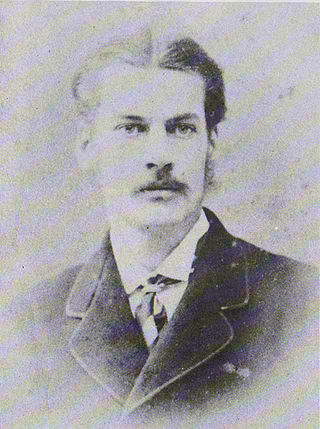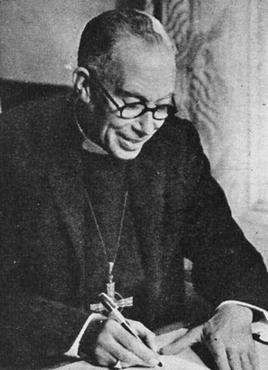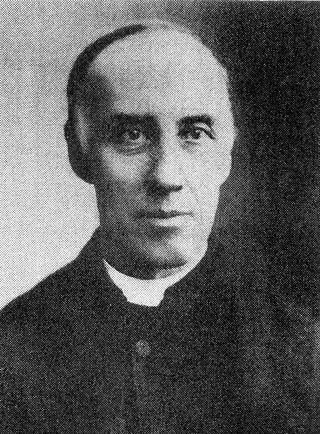Related Research Articles

The Nippon Sei Ko Kai, abbreviated as NSKK, sometimes referred to in English as the Anglican Episcopal Church in Japan, is the national Christian church representing the Province of Japan within the Anglican Communion.

Sir Ernest Mason Satow,, was a British diplomat, scholar and Japanologist. He is better known in Japan, where he was known as Satō Ainosuke, than in Britain or the other countries in which he served as a diplomat. He was a key figure in late 19th-century Anglo-Japanese relations.

William George Aston was an Anglo-Irish diplomat, author, and scholar of the languages and histories of Korea and Japan.

John George Wood, or Reverend J. G. Wood,, was an English writer who popularised natural history with his writings. His son Theodore Wood (1863–1923) was also a canon and naturalist.

Walter Weston was an English clergyman and Anglican missionary who helped popularise recreational mountaineering in Japan at the turn of the 20th century.

Edgar Charles Sumner Gibson was the 31st Bishop of Gloucester. He was born into a clerical family. His father was a clergyman and his son Theodore Sumner Gibson was a long serving Bishop in two South African Dioceses. He was educated at Charterhouse and Trinity College, Oxford. Ordained in 1872, his first post was as Chaplain at Wells Theological College, rising to Vice Principal in 1875. His next post was as principal of Leeds Clergy School and he later became Rural Dean of the area and Vicar of Leeds Parish Church.

Joseph Armitage Robinson was a priest in the Church of England and scholar. He was successively Dean of Westminster (1902–1911) and of Wells (1911–1933).

St. Andrew's Cathedral, Yokohama (横浜聖アンデレ教会) is the Cathedral Church of the Yokohama Diocese of the Nippon Sei Ko Kai, the Anglican Church in Japan. The diocese includes all Nippon Sei Ko Kai churches in Chiba, Kanagawa, Shizuoka and Yamanashi prefectures.

Thomas Wortley Drury was a British Anglican bishop who served as Master of St Catharine's College, Cambridge from 1920.

Clifford Arthur Martin was an Anglican bishop. He was the fourth Bishop of Liverpool, serving from 1944 to 1965.

Rev. Albert Augustus Isaacs was a British clergyman, historian and anthropologist, specialising in the history of the Jews and Arabs in the Middle East, as well as an amateur photographer who took some of the earliest images of the Holy Land. Of major note is his biography of the Reverend Henry Aaron Stern (1820–1885), published in 1886, who for more than forty years was a missionary amongst the Jews. The book contains an account of his labours and travels in Mesopotamia, Persia, Arabia, Turkey, Abyssinia, and England.

Philip Kemball Fyson was an Anglican bishop of the Diocese of Hokkaido, in the Nippon Sei Ko Kai, the province of the Anglican Communion in Japan.
Harry Dan Leigh Viener, CBE, UCd'I was an eminent Anglican Chaplain in the first half of the 20th century. In 1918, he joined the fledgling Royal Air Force Chaplains Branch as its first Chaplain-in-Chief.
Henry Kaye Bonney D.D. was an English churchman, photographer and author.

Alexander Croft Shaw M.A. was a minister of the Anglican Church of Canada. He is remembered as Archdeacon Shaw, minister to the British Legation in Tokyo and a leading figure in the early years of the Anglican Church in Japan.

Christ Church, Yokohama, is a historic Anglican church located in Yamate, Yokohama, Japan. Providing a center of worship for both Japanese and English-language congregations the church traces its foundation to shortly after the formal opening of the treaty port of Yokohama in 1859.

The Chaplain to the Speaker of the House of Commons, also known as the Speaker's Chaplain, is a Church of England priest who officiates at services held at the Palace of Westminster and its associated chapel, St Mary Undercroft. The Chaplain also acts as chaplain to the Speaker and Members of Parliament. The first Speaker's Chaplain was appointed in 1660. The current officeholder is Mark Birch.

St Alban's Anglican Church is a heritage-listed and active Anglican church at 171 Great North Road, Five Dock in Sydney, New South Wales, Australia. The property spans back to the early days of British settlement in Australia. The site underwent multiple evolutions and renovations until it became originally included in St Phillip's Parish on 23 June 1802. The foundation stone of the church building was laid on 17 September 1858. The church building was intended to be divided into two parts, as a Parochial School and a Mission Church. The church's life and management relied heavily on the 'mother church' of the district, being St John's, Ashfield which was in close proximity to St Alban's and shared rectors over both sites.
William Morgan (1782–1858) was a Welsh evangelical cleric, known for his support of factory reform. He was also a close friend of the Brontë family.
Philip Napier Waggett was a British Anglican priest, scholar, and military chaplain.
References
- ↑ Venn, John (2011). Alumni Cantabrigienses (Digital version ed.). Cambridge: Cambridge University Press. p. 118. ISBN 978-1-108-03611-5.
- ↑ "Church Meeting". Yokohama: The Japan Gazette. 23 January 1874. p. 10.